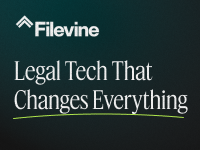
Image via Getty
Last summer, we wrote about a potentially important case going to the Supreme Court, technically about the copyright design of cheerleading uniforms. As we’ve discussed, copyright is supposed to apply to artistic expression, and it’s been considered not to apply to functional products or industrial design — sometimes referred to as “useful articles.” Along those lines, things like fashion design, have always been considered not subject to copyright. In this case, Star Athletica v. Varsity Brands, the question was raised about the design of certain stylistic elements on cheerleading uniforms, and whether one copy using similar elements on its cheerleading uniforms infringed on the copyrights of the other. A district court said no, the appeals court said yes. And now the Supreme Court has weighed in saying that the designs can be covered by copyright and creating a new test on such matters (previously, there was something of a mess of different tests that judges would apply, sometimes haphazardly). Having a single test seems better than a mishmash of competing tests, but the situation here is… potentially very dangerous to a variety of innovations.
First up, here’s the new test:

Paying for Law School in 2025: A Straight-Talk Playbook
Juno has consistently secured the best private loan deals for students at the Top MBA programs since 2018—now they’re bringing that same offer to law students, at no cost. Students can check their personalized offers at juno.us/atl This article is for general information only and is not personal financial advice.
We hold that a feature incorporated into the design of a useful article is eligible for copyright protection only if the feature:
(1) can be perceived as a two- or three-dimensional work of art separate from the useful article and
(2) would qualify as a protectable pictorial, graphic, or sculptural work—either on its own or fixed in some other tangible medium of expression—if it were imagined separately from the useful article into which it is incorporated.
In other words, if you can pull the design out of the “useful article” and it’s still a design that’s subject to copyright, then the copyright lives on. At a first glance this certainly seems to make sense. It has a fairly common sense feel to it — and the majority argues that the plain text of the law supports this interpretation. But there are some pretty serious potential dangers here. In our article last year, we noted that the implications for this case go way, way beyond cheerleader uniforms and could touch on any variety of products that might include some decorative elements — especially in the 3D printed world, where so many designs are freely shared and modified.
And the deeper you get into this, the “simple, common sense” ruling starts to get more and more complex. For example, the majority notes that this test stands even if the “removal” of the work of art makes the original no longer useful. That is, even if the “artwork” is part of the utility of the object, it can still get the copyright. That… seems to be pushing the line quite a bit. The dissent — by Justice Breyer with Justice Kennedy signing on — highlights why this doesn’t make much sense. If the copyright can only be applied to a piece of artwork that is “separable” from the overall object, it needs to actually exist independently and that shouldn’t destroy the object itself:
A separable design feature must be “capable of existing independently” of the useful article as a separate artistic work that is not itself the useful article. If the claimed feature could be extracted without replicating the useful article of which it is a part, and the result would be a copyrightable artistic work standing alone, then there is a separable design. But if extracting the claimed features would necessarily bring along the underlying useful article, the design is not separable from the useful article. In many or most cases, to decide whether a design or artistic feature of a useful article is conceptually separate from the article itself, it is enough to imagine the feature on its own and ask, “Have I created a picture of a (useful part of a) useful article?” If so, the design is not separable from the useful article. If not, it is.

How Filevine Bakes AI Into Every Layer Of Your Case Management
It’s like having a junior associate who’s never off the clock.
Breyer harkens back to one of our favorites, Lord Thomas Macauley, who warned of the dangers of expanding copyright into areas where it doesn’t belong:
Years ago Lord Macaulay drew attention to the problem when he described copyright in books as a “tax on readers for the purpose of giving a bounty to writers.” … He called attention to the main benefit of copyright protection, which is to provide an incentive to produce copyrightable works and thereby “promote the Progress of Science and useful Arts.” … But Macaulay also made clear that copyright protection imposes costs. Those costs include the higher prices that can accompany the grant of a copyright monopoly. They also can include (for those wishing to display, sell, or perform a design, film, work of art, or piece of music, for example) the costs of discovering whether there are previous copyrights, of contacting copyright holders, and of securing permission to copy…. Sometimes, as Thomas Jefferson wrote to James Madison, costs can outweigh “the benefit even of limited monopolies.” … And that is particularly true in light of the fact that Congress has extended the “limited Times” of protection…, from the “14 years” of Jefferson’s day to potentially more than a century today….
The Constitution grants Congress primary responsibility for assessing comparative costs and benefits and drawing copyright’s statutory lines. Courts must respect those lines and not grant copyright protection where Congress has decided not to do so. And it is clear that Congress has not extended broad copyright protection to the fashion design industry.
Breyer also makes the analogy of Van Gogh painting old shoes — in which Van Gogh could certainly copyright the painting itself — but couldn’t also copyright the shoe design in the painting and use that to bar others from selling such shoes. And this dissent notes that this case seems to flip that reasoning upside down:
Consider designs 074, 078, and 0815. They certainly look like cheerleader uniforms. That is to say, they looklike pictures of cheerleader uniforms, just like Van Gogh’s old shoes look like shoes. I do not see how one could see them otherwise.
For visual reference, here are those designs:
As he notes, it’s fairly clear here that the submission to the copyright office is the design of the overall uniform. It’s not separate from the uniform. They didn’t just submit a design of these lines and shapes. It’s a uniform:
Were I to accept the majority’s invitation to “imaginatively remov[e]” the chevrons and stripes as they are arranged on the neckline, waistline, sleeves, and skirt of each uniform, and apply them on a “painter’s canvas,” … that painting would be of a cheerleader’s dress. The esthetic elements on which Varsity seeks protection exists only as part of the uniform design—there is nothing to separate out but for dress-shaped lines that replicate the cut and style of the uniforms. Hence, each design is not physically separate, nor is it conceptually separate, from the useful article it depicts, namely, a cheerleader’s dress. They cannot be copyrighted.
Unforutnately, that’s not what the majority decided. And to show how this might impact much more than just cheerleader uniforms, let’s go over to 3D printing company Shapeways, and its analysis of this ruling.
Since we’ve been using it as an example for a while, let’s go back to Studiogijs’ Birdsnest Egg Cup to explain why this is important.
The test as established by the Court can be thought of as a copyright-first test. Looking at the cup, it asks a viewer to pull out all of the parts of the cup that could be perceived as a two- or three-dimensional work of art. Viewed some ways, that’s basically the entire cup. The bird and the branches could all exist as an independent artistic work, even though removing them would leave you with no way to hold your egg. And that’s ok. The test does not care that there might be very little left of the functional parts of the object after you remove those artistic elements. It only cares that the artistic elements can be perceived. Each of those artistic elements are protected by copyright.
An alternative test — one not adopted by the court— could have taken a useful-first approach. Instead of starting with the artistic elements, it could have pulled out the parts of the object that are required for the object to achieve its functional goals. Again, that’s basically the entire cup. The branches, however artistically rendered, also serve the functional purpose of holding the egg. The test could then look at what was left — in this case, that’s basically the bird — and protect those with copyright. This approach would keep functional elements outside of copyright protection and greatly reduce the cup’s connection with copyright.
As you can see, the place where you start this test can have a huge impact on the outcome. Start by removing the artistic elements without concern for the underlying utility and you end up with a lot of stuff protected by copyright. Start by removing the useful parts without concern for the artistic elements and you end up with less stuff protected by copyright.
In talking to a few different copyright lawyers about this ruling, there are a variety of levels of concern. Some are still hopeful that the clear test is a good thing, and that the damage done by expanding copyright to cover more of the useful elements of objects won’t be that big of a deal. Others, however, are much more worried, as we’ve all seen how copyright creep and the use of copyright to block, limit and destroy both speech and innovation can happen quite rapidly. I hope that’s not the case here, but I fear that we’ll now see more efforts to abuse this new test to overclaim copyright on objects, and that will lead to greatly limiting innovation in a variety of areas.
More Law-Related Stories From Techdirt:
Majority Of Intuit’s Lobbying Dollars Spent Trying To Stop IRS From Making It Easier To File Your Taxes
Netflix Is No Longer Worried About Net Neutrality Now That It’s Massive And Successful
California Police Department Can’t Keep It Real; Deploys Fake Press Releases And Fake Affidavits

